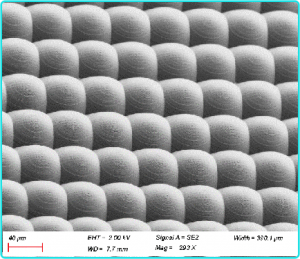
Micro and Nano Processing | MEMS Fine Processing (VII)
1.10 Bonding technology
Wafer bonding is similar to soldering in that the layers of material are melted together to form a strong bond without a binder, and there are two techniques: silicon-glass bonding and silicon-silicon bonding. Silicon-glass bonding is done by applying several hundred volts of DC voltage between silicon and glass at 350°C to 500°C for a few minutes. Si-Si bonding is the direct bonding of two polished silicon surfaces together at high temperatures by atomic forces to form a single unit. The bonding technique facilitates the realization of complex micromechanical structures.
1.11 Scanning Probe Microscopy (SPM) Processing Technology
By applying scanning probe microscope processing technology to atomic and molecular-level surface processing at the probe tip, we can reach the limits of microfabrication and perform processing in the nanometer range. The high electric field at the probe tip close to the surface of the test material is used to break the bonds between atoms and evaporate them, allowing for the removal, addition and movement of individual atoms.
1.12 Micro-fine stereolithography
It is a new type of microfabrication technology, which belongs to light modeling technology, and can integrate laser technology, CAD/CAM technology, material science and microfabrication technology to directly process miniature three-dimensional structures, and can be combined with micro electroforming technology to extend the scope of application to metal or non-metal. The processing device consists of a laser source, an optical control system, a three-way motion control system for the table, a micro-motion table and a polyester resin loading device. Among them, the laser source with high processing resolution is the key of this method. At present, springs with a diameter of 50 μm and an accuracy of 1 to 10 μm have been processed by this method. This method can also be used with laser etching technology to process more complex parts.
1.13 Integrated mechanism manufacturing technology
Recently, there is a new trend in micromechanics, namely, the use of large-scale integrated circuit microfabrication technology, a variety of delicate micro-mechanisms, such as: micro-actuators, micro-sensors, micro-controllers, etc. integrated in a silicon chip. It can turn the traditional passive mechanism into an active mechanism, and can be made into a complete electromechanical integration of MEMS, the size of the whole system is expected to be reduced to a few millimeters to a few hundred microns.
We offer fastMEMS device / micro and nanostructure processing design services, Feel free to leave a message to inquire.
Related Products
Related Reading
Micro and Nano Processing | Cellular patterning of protein micro and nano structures
Micro-Nano Processing| Protein-based Micro-Nano Device Chip Fabrication In recent years, due to
Micro and Nano Processing | Photolithography - Optical Lithography
Micro and Nano Processing | Photolithography - Optical Lithography in Nano and Micro Processing Technology
UV-LIGA Electroforming | Preparation of fine metal mesh panels with large thickness and high porosity
UV-LIGA Electroforming | Fabrication of Metal Array Stencils Current Preparation


